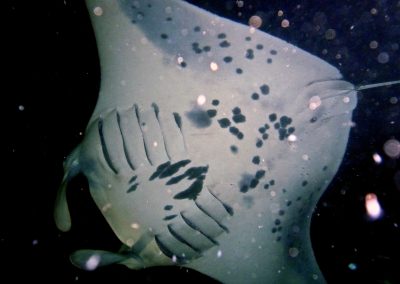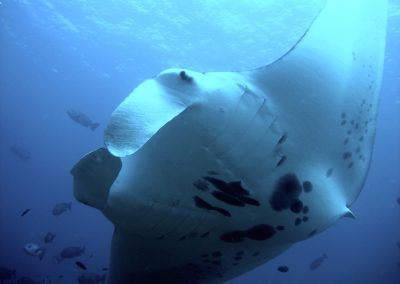MantaWatch is our flagship manta photo tagging project. By submitting their sightings and photos, our community of MantaWatchers play a vital role in assessing manta ray populations and supporting conservation efforts.

Courtesy of NOAA
What makes MantaWatch Photo ID important?
Very little is know about manta ray biology, ecology and behaviour. As recently as 2009 it was discovered that there are in fact two species of manta throughout the world, as opposed to just one.
Throughout their range, manta rays are listed as “Near Threatened” and “Data Deficient”. There is insufficient data available to make accurate assessments of manta population sizes, and the impacts they face. Conservation and management initiatives are hampered by a lack of scientific information, and knowledge about their life histories.
MantaWatch members help improve scientific knowledge!
By joining MantaWatch, and uploading your manta photos, you assist our scientists to track manta population sizes, migrations and movements, and learn more about the species and its threats.
What is an ID photo?
Every manta is unique. The markings on its underside around the gills are like a fingerprint. Individual mantas can be recognised and identified by these marks.
A good ID photos shows the underside of the manta front on, revealing as much of the gill area as possible.
While a good ID photo is important, it is not as important as the manta’s well-being. We ask all MantaWatch members to read and adhere to our Manta Encounter Code of Conduct.
What does MantaWatch do with my pictures?
Your ID photos, along with details of your sightings, are added to our database. To submit a sighting, visit our Manta Encounter page.
Over the coming months we will be making it even easier for you to submit your manta sightings, wherever you are. Watch this space!
After you submit your sighting to our MantaWatch database, then it’s over to our team of expert scientists. They check each and every new photo by hand, and compare it against our database of known manta individuals. To date, we have identified and named over 80 individuals in Indonesia alone.
Each one of your sightings is classified as either a known manta, or a new sighting. If it’s a new sighting, we will let you know the exciting news, and invite you to help with naming this manta.
How does MantaWatch support manta research and conservation?
Once we have identified your manta sightings, the interesting work starts.
By calculating how often new sightings are recorded, and the ratio of new sightings to known individuals, we can calculate manta population size. We can perform these calculations for a specific dive site, an area, or for an entire country or region.
The more ID photos and information we have, the more precise our calculations are. The contributions of MantaWatch members are invaluable.
With this information, we can track population trends, and identify whether populations are increasing or decreasing in size. This can provide scientists and managers with an early warning of threats, and enable timely and appropriate management interventions to be implemented.
Your Manta Encounter data also helps extend our knowledge of manta behaviour. With time, we are building up a better idea of how far mantas roam, how frequently they return to the same locations, and about their migratory behaviours and habitat preferences.
Your Manta Encounter data makes a huge contribution to understanding these magnificent creatures more. Most importantly, it feeds directly into developing targeted management and conservation programs that reflect manta biology and ecology.
How do I help?
The key ingredient in this process is you. Our network of MantaWatchers enable us to monitor manta ray populations 7 days a week, 365 days a year. Without your efforts, collecting this important information would be logistically and financially impossible.
With our MantaWatch members collecting data in the field, our scientists can concentrate their time where it is most effective – analysing the trends and working with communities and stakeholders to implement sustainable management programs.
So don’t delay. Whether you’re a diver, snorkeler, or would just like to learn more, join MantaWatch today. Membership is free, and as a registered member you will receive all our latest news, updates and special offers.
Get involved, and help protect the iconic manta ray.


